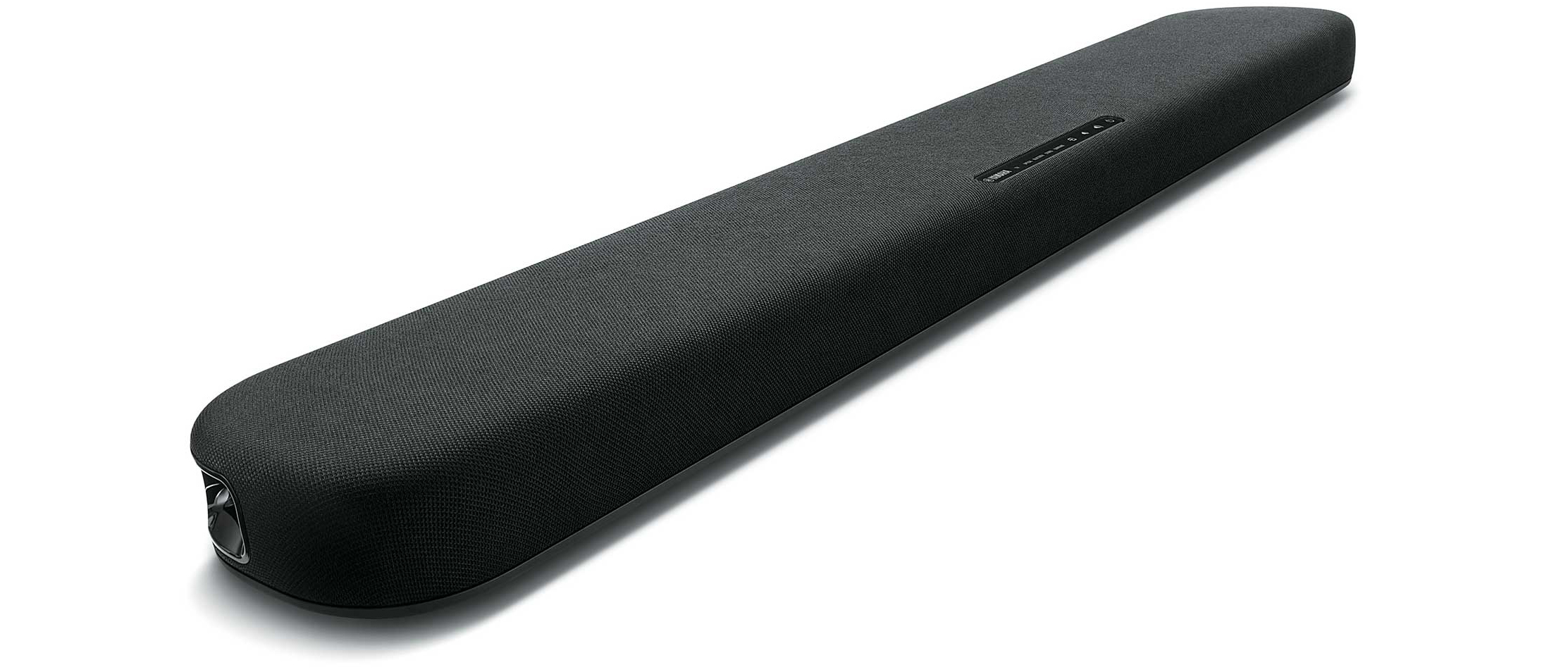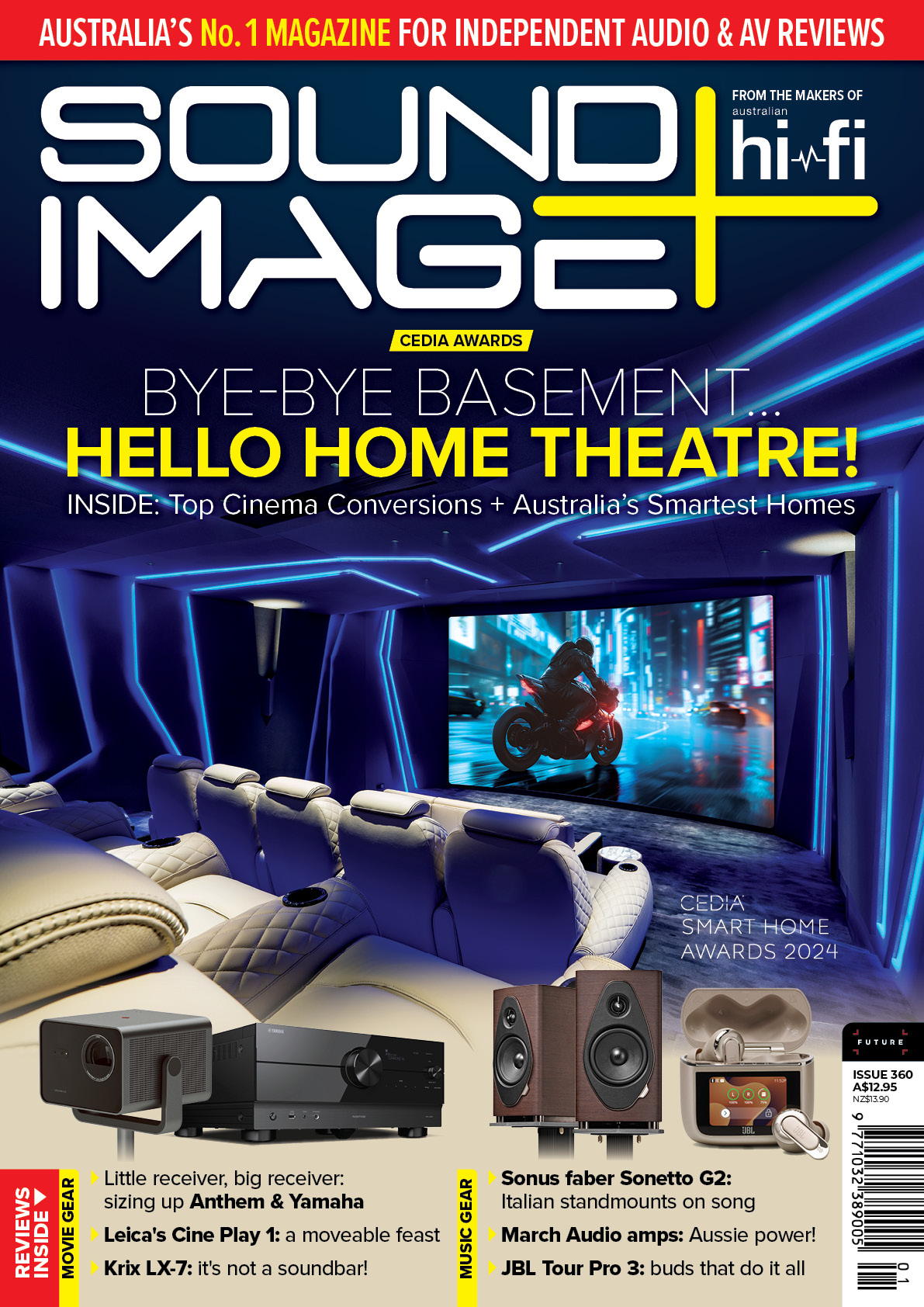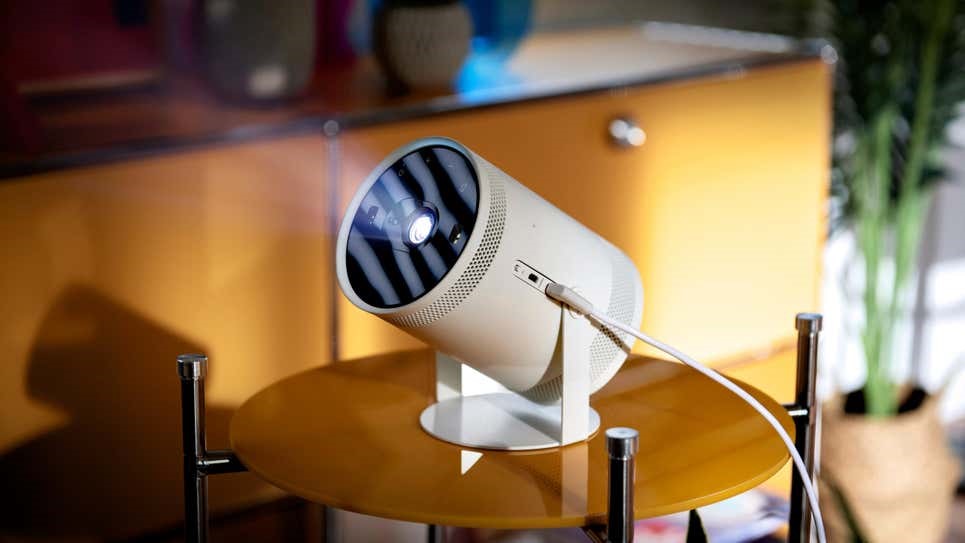Sound+Image Verdict
Yamaha's affordable soundbar needs no subwoofer, yet delivers remarkably large and natural sound.
Pros
- +
Impressive sound at the price
- +
No subwoofer to deal with
- +
Bluetooth streaming
- +
Nice remote and app control
Cons
- -
Virtual surround not worth having
Why you can trust What Hi-Fi?
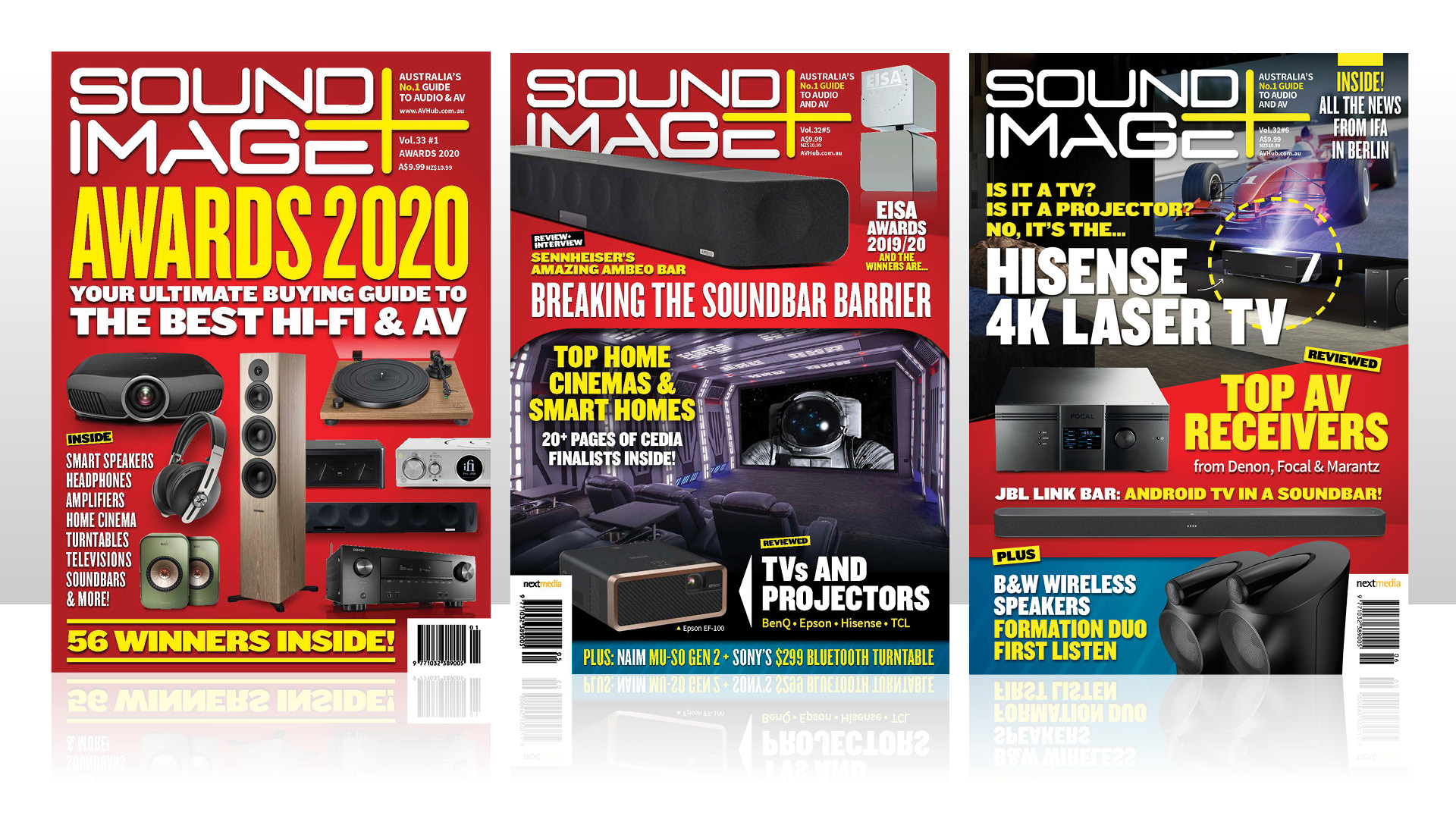
This review originally appeared in Sound+Image magazine, one of What Hi-Fi?’s Australian sister publications. Click here for more information on Sound+Image, including digital editions and details on how you can subscribe.
Read What Hi-Fi?'s global, star-rated review of the Yamaha SR-B20.
Yamaha describes both its two latest ‘entry-level’ soundbars as upgrades for your TV sound. That's something very much required in these days when flat TV screens generally mean weedy built-in TV sound. And unlike some rivals at this price, there is mercifully little pretence from Yamaha that the bars will deliver ‘surround’ sound, other than options labelled ‘3D Surround’ and some rather optimistic claims for the inclusion of DTS Virtual:X.
These marketing extravagances aside, what’s promised is simply solid sound with which to enjoy your shiny new flatscreen.
And what we particularly like about the SR-B20A on review here (£249, $200, AU$329) is that it aims to perform without the usual wireless subwoofer. This not only keeps the price down, it makes the whole package far more convenient to site and to use.
The question, then, is whether a long flat bar of a speaker like this can create solid enough sound without that subwoofer in support. And thankfully the answer here is a fairly resounding yes.
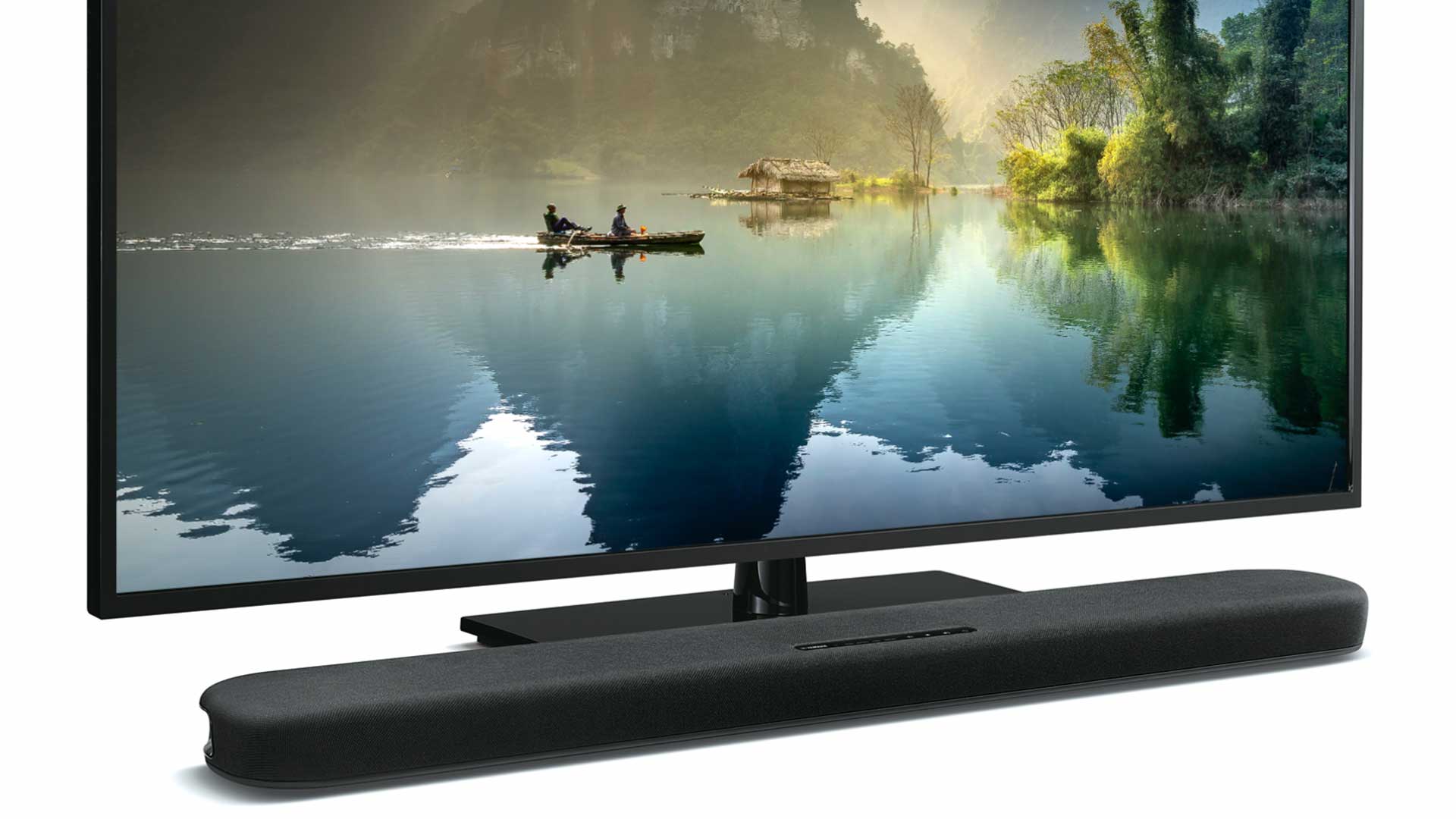
Build & unboxing
Unlike many soundbar packages these days, unboxing the SR-B20A is pleasingly straight-forward. Without a hefty subwoofer inside, the box is small and light enough to sit on your knee as you unseal the carton, remove the surprisingly large remote control, and lift the neatly wrapped SR-B20A from the polystyrene.
Despite the entry-level price here, the soundbar feels solidly built, and looks stylish too, with black fabric wrap and curving ends – by no means a budget-looking bar. It stretches a fair 91cm wide, a good match for 55-inch TVs, but with nothing to stop its use with TVs smaller or larger.
Literature in the box includes a mounting template which shows that the bar can be stuck flat to the wall with the supplied foam spacers and a couple of sturdily fixed screws. There’s also the compulsory ‘safety guide’ leaflet to warn against stupidities such as standing on the bar, placing “burning items” nearby, unplugging it with wet hands, or “being near it during a disaster, such as an earthquake” (for which the excellent advice is to “quickly move away from the unit and go to a safe place”).
The “quick start” guide is rather more practical, detailing the positioning and connection choices. You can, as noted, hang it on the wall, in which case the controls, the indicator lights and most of the drivers usefully face the listener. Or you can bench it in front of your TV, in which case the controls and lights are less usefully hidden.

Connections
The bar can get sound from your TV in two (or potentially three) ways. Top option is an HDMI cable from the bar to an ARC (Audio Return Channel)-equipped HDMI socket on your TV, assuming it has one. If it doesn’t, or if you don’t wish to give up one of the HDMI sockets on your TV, second best option is an optical digital connection, for which a cable comes in the box; there is no HDMI cable included.
Unusually there is no analogue minijack fall-back input here (yet one does feature on the smaller SR-C20A at £219, $179.95, AU$299), and there’s no networking of any kind. But there is Bluetooth which supports both SBC and AAC codecs, primarily intended for music streaming from a smart device, we imagine, although TVs that can output audio via Bluetooth could also send their audio to the bar in this way (at the peril of potential transmission delay, depending on the system, see below).

Inputs: 1 x HDMI ARC, 2 x optical digital, Bluetooth (SBC, AAC), USB-A (update only)
Outputs: subwoofer out
Drivers: 2 x 25mm tweeter, 2 x 55m midrange, 2 x 75mm woofer (see text notes on sizes)
Quoted power: 30W x 2, 60W x 1 (10% THD)
Dimensions: 910 × 53 × 131mm (benched)
Weight: 3.2kg
There are a couple of other connections, besides the mains cable – a second optical input for any suitable device, and a coaxial digital output which you could run to a subwoofer, should you wish to add one. Given that adding a separate subwoofer of quality will more than double the price and then some, you’d do better to buy one in a package if you’re after that bottom octave of movie-style bass: Yamaha has a number of such combos. Yet as we’ll hear, the B20A does a remarkable job without additional support.
We initially cabled the Yamaha bar to the ARC-equipped input of a 2020-model Samsung TV, but despite an assault on the many relevant menus of the TV, no sound ever emerged via ARC. This was not entirely a surprise; we find ARC to be less than reliable.
We soon plugged in the supplied optical cable, which worked immediately into either socket, and we ran with that for the length of the review, except that first we tried pairing the bar by Bluetooth to the Samsung TV. This worked extremely well.
While the sound was slightly softer than via optical and slightly more delayed, it was still an enjoyable, clear and impressively-sized sound, and the delay fell within even our particular hyper-sensitivity to lip-sync delay. For wall-mounting, of course, Bluetooth also has the benefit of removing all wires except the mains cable.
Drivers
Bluetooth will send only stereo signals, of course, but then the B20A is a stereo soundbar, with six drivers in all. Four of these fire upwards if the unit is benched (forward if on the wall) – according to the specs these are 55mm mid-rangers near each end and 75cm bass drivers halfway from each end to the centre, porting through side-firing ports in the curves of the bar, although using a pencil torch to shine through the grille, both sets seem rather smaller than specified when measured across their roll surround.
The quoted power ratings also suggest (and Yamaha confirms) that the woofers are running in a dual-mono configuration rather than stereo. Finally there are two 25mm (specification) tweeters on the front edge (benched) or firing down (wall-mounted); no amount of torchlight could reveal their location through the grille fabric!
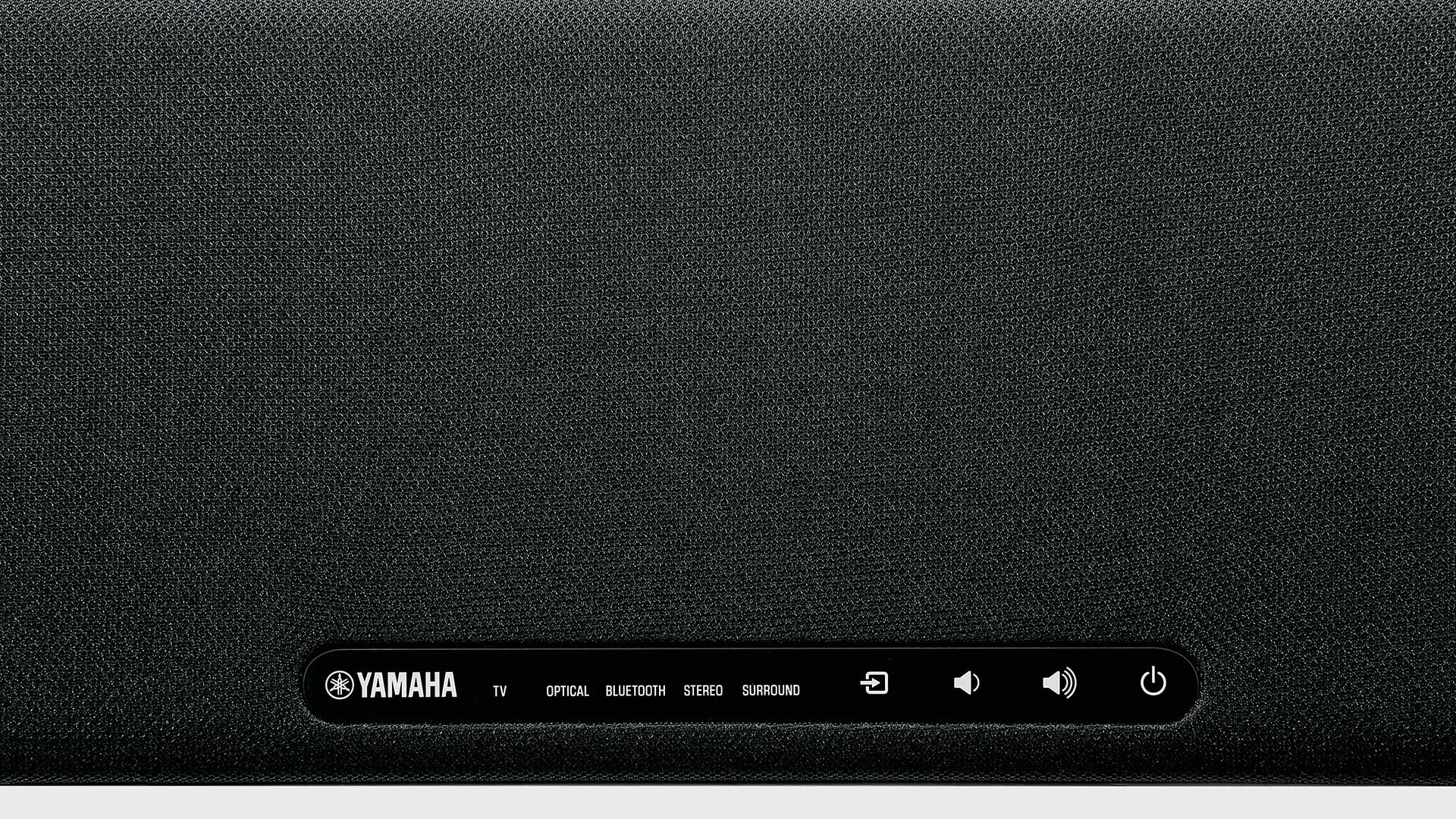
Sound
We had the unit benched in front of the TV, where its 56mm height kept it well below the screen of the TV, and we wondered how the upfiring drivers might affect the clarity of performance. Not at all, it would seem; indeed possibly the upfiring effect assisted the way in which the sound seems to come from the TV screen rather than the bar – though the brain will assist in that illusion anyway.
Certainly from the very outset the bar delivered a large full sound with a real sense of size, while holding dialogue crisp and clear. Watching Ewan McGregor and Charley Boorman’s Long Way Up electric bike tour on AppleTV+, voices were resonant and clearly edged, while the featured music – always a challenge for budget soundbars – sounded musical, spacious and well-balanced. There was reasonably wide steerage of the electric bike whines as they sped from left to right across the screen.
The thing we keep noting down was the fullness of the bass. We also tried the effect of the little button on the remote control marked ‘Bass Ext.’ When we pressed it, the bottom octave of bass just disappeared, so consider it required, and leave it on (it seems to be a default) unless you deliberately want to cut the bottom end for, say, night-time listening.
As is Yamaha’s custom, the remote also has two separate volume up/down pairs – one for the main volume, one for the ‘subwoofer’. But there’s no subwoofer here, so instead these controls change the output of the bass drivers in the bar. This makes it easy to further tweak the bass according to different material.
In addition Yamaha includes a few sound modes – the four main ones being ‘stereo’, ‘standard’, ‘movie’ and ‘game’. With any of these except stereo, you can also add ‘3D Surround’. Indicator lights on the bar (which are dimmable) show what’s happening, though if you have the bar flat on a bench, you can’t see these. But impressively at this price you can download Yamaha’s Soundbar Remote app (shown below), which lays out the options more clearly, while also offering input selection and ‘Clear Voice’ (an option which we never needed).
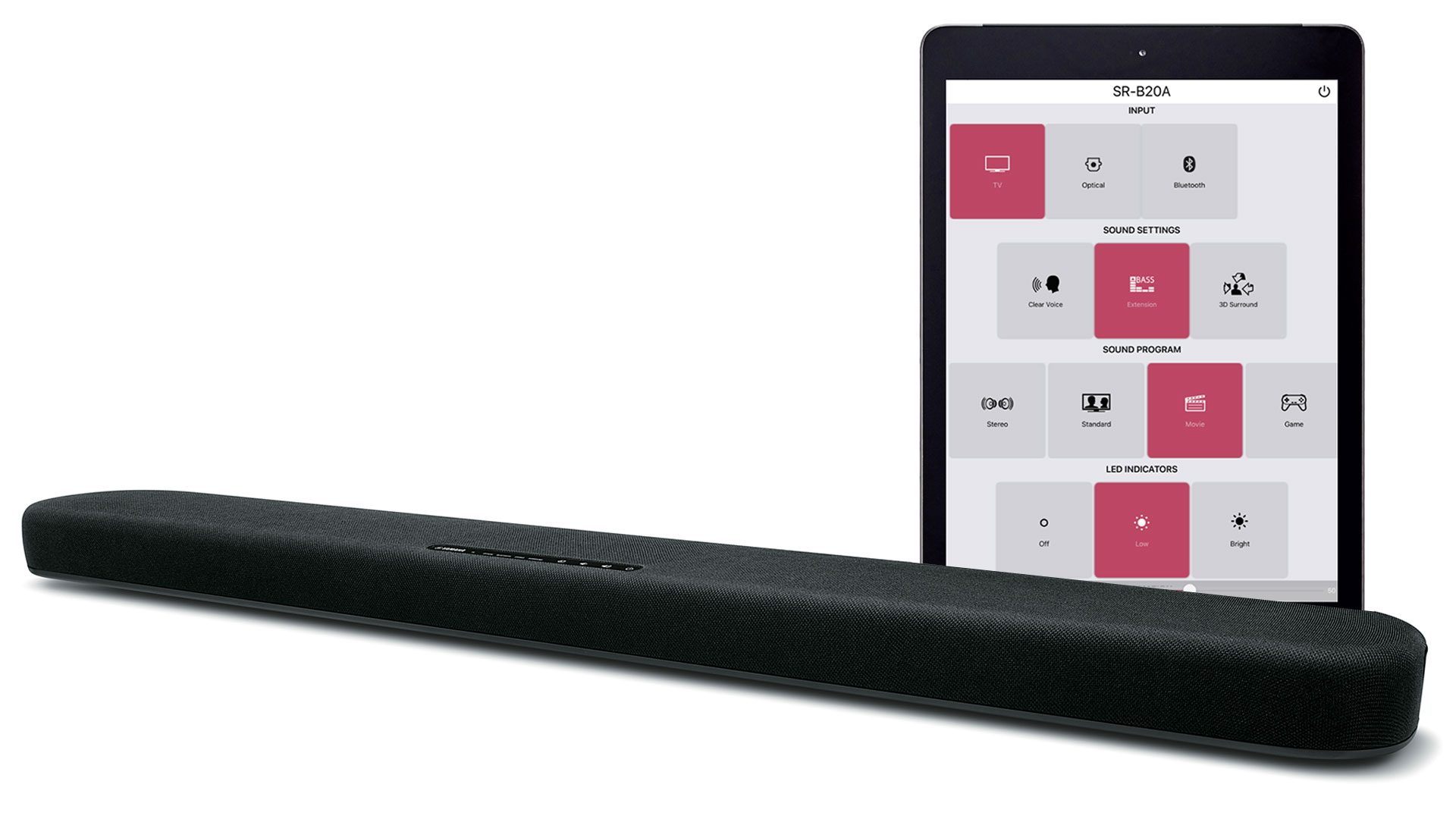
The ‘3D Surround’ option invariably had the effect of beefing things up in level and thickness, while making voices a little boxy and sibilant; not once did we prefer the overall audio quality with this option engaged. And without it there seemed little difference between the four modes anyway… so that makes your choices pretty easy!
We played through Hamilton The Musical on Disney+ to check the bar’s musical performance; of course it won’t match an amp and a good pair of bookshelf speakers, but you won’t be finding those for AU$319, while we’ve heard soundbars at double this price sounding unable to match the clarity here. Bass can sometimes slightly bloat, and it doesn’t fully reach down to the lowest few notes of a bass guitar, but the overall balance prevented this seeming like a sound that was cut off at the knees, and again we were impressed by this lone bar sounding musical, enjoyable, and well-balanced. We could leave songs streaming from an iPhone via Bluetooth to the SR-B20A and take enjoyment rather than offence from the experience.
Verdict
“Virtual 3D surround and DTS Virtual:X technology come together to envelop your whole body in sound”, says Yamaha’s website for the SR-B20A. Er, no. There’s no surround here whatsoever. Such claims take away from what the SR-B20A does achieve – remarkably large and natural sound from a convenient and attractive bar, no subwoofer required, working well in either orientation, and just the thing for kicking up the level of TVs in any room.
Of course you can get more – including networking and streaming services – by paying significantly more, but this is a great entry-level soundbar which focuses on sound quality, which is the reason for buying a soundbar in the first place. Excellent value.
Sound+Image is Australia's no.1 mag for audio & AV – sister magazine to Australian Hi-Fi and to the UK's What Hi-Fi?, and bestower of the annual Sound+Image Awards, which since 1989 have recognised the year's best hi-fi and home cinema products and installations. While Sound+Image lives here online as part of our group, our true nature is best revealed in the print magazines and digital issues, which curate unique collections of content each issue under the Editorship of Jez Ford, in a celebration of the joys that real hi-fi and high-quality AV can bring. Enjoy essential reviews of the most exciting new gear, features on Australia's best home cinemas, advice on how to find your sound, and our full Buying Guide based on all our current and past award-winners, all wrapped up with the latest news and editorial ponderings. Click here for more information about Sound+Image, including links to buy individual digital editions and details on how best to subscribe.
